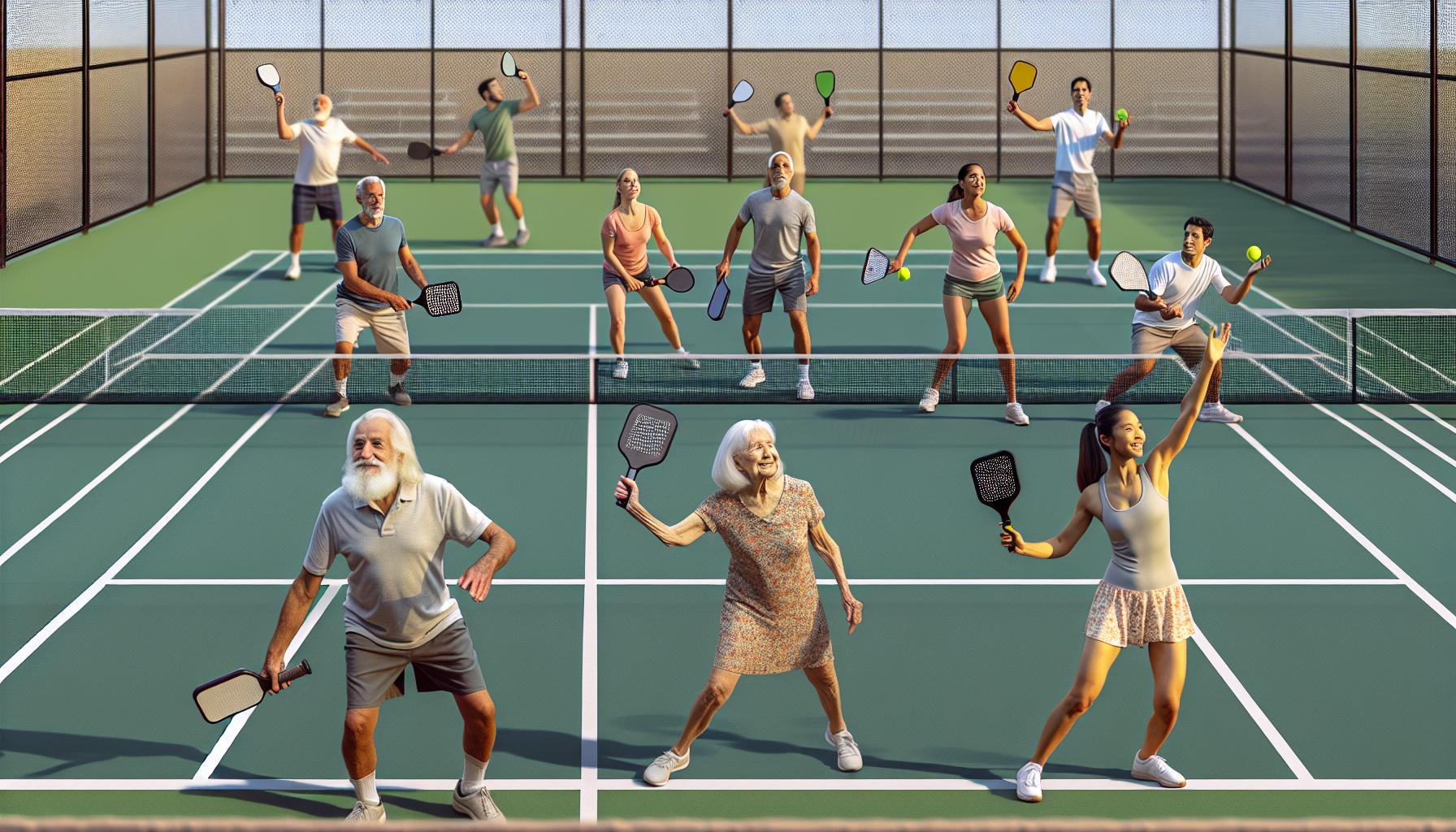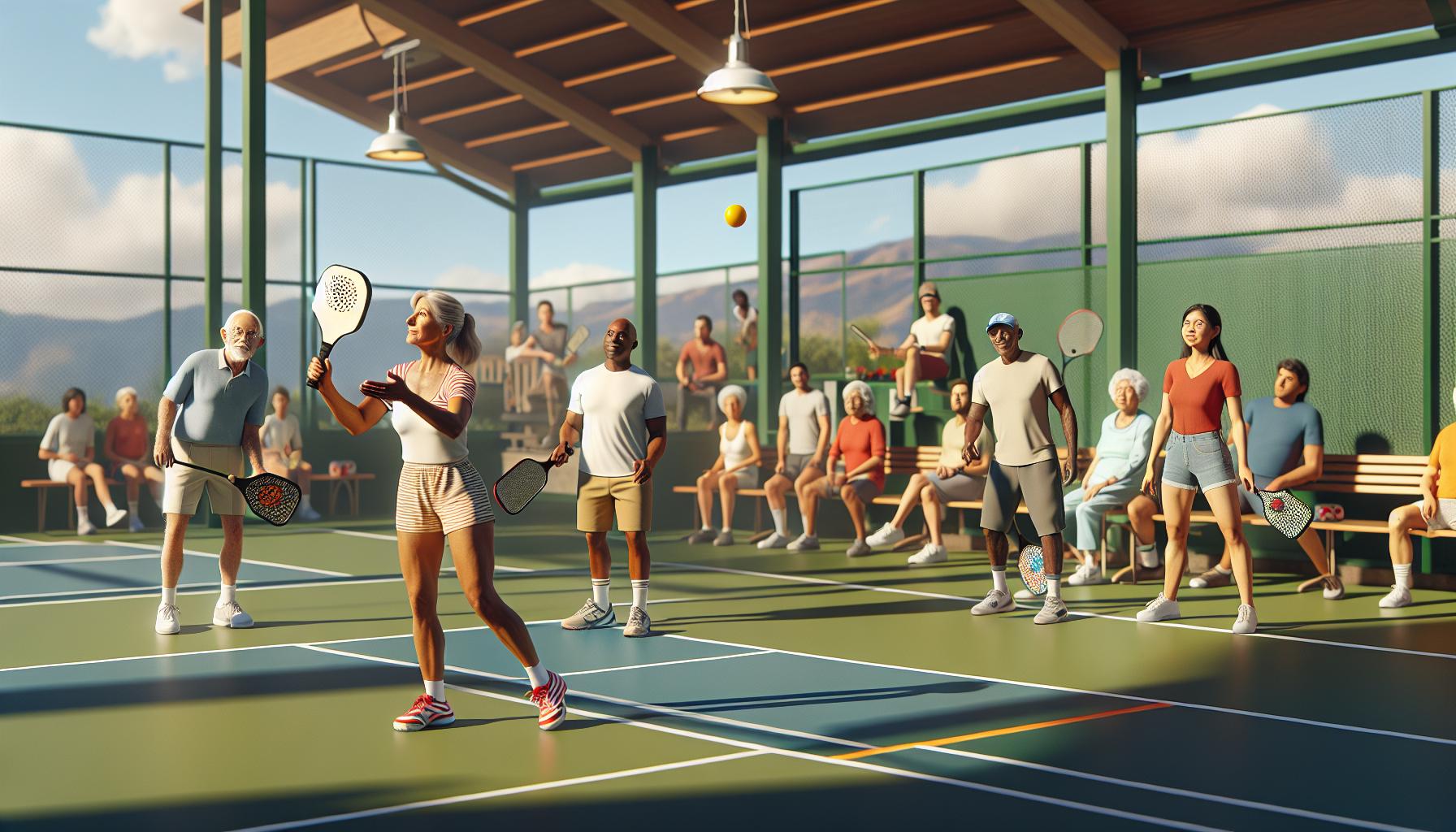Pickleball, the sport that’s sweeping the nation, has a unique way of ensuring fair play and competitiveness among its players. It’s not just about how well you can swing a paddle; it’s also about who you’re swinging it against. That’s where age and skill level divisions come into play, creating an even playing field for everyone from beginners to seasoned pros.
Understanding these divisions is key to enjoying the game to its fullest. Whether you’re just dipping your toes into the world of pickleball or you’re aiming to dominate the court, knowing where you fit in the grand scheme of things can make all the difference. Let’s dive into how these divisions shape the game and why they’re so important for players of all ages and abilities.
Importance of Age and Skill Level Divisions in Pickleball
In pickleball, the age and skill level divisions play a pivotal role in ensuring that matches are fair, competitive, and enjoyable for everyone involved. By categorizing players based on their age and proficiency, the game becomes more accessible to a broader audience, allowing players from various backgrounds to participate.
Age divisions typically ensure that players compete against others who are in a similar stage of life. This categorization is particularly critical because physical abilities and mobility can vary significantly with age. It’s not just about creating an equitable playing field; it’s also about safety. The divisional play based on age helps reduce the risk of injuries, as players are less likely to encounter opponents with vastly different physical capabilities.
Skill level divisions, on the other hand, categorize players by their ability, from beginners to advanced-level players. These divisions ensure that matches are competitive and fun, regardless of a player’s experience. Such a system encourages learning and improvement, as players are motivated to advance to higher skill levels through practice and competition.
The integration of both age and skill divisions in pickleball facilitates social interactions among players. Participants often find themselves making new friends, or even friendly rivals, within their division. This social aspect of the game is a huge draw for many players, enhancing the community feel of pickleball.
To underscore the importance of these divisions, consider the following data on player participation and satisfaction across different divisions:
| Age Division | Number of Players | Satisfaction Rate |
|---|---|---|
| 18-34 | 5,000 | 92% |
| 35-49 | 4,500 | 89% |
| 50-64 | 6,000 | 95% |
| 65+ | 4,000 | 93% |
| Skill Level | Number of Players | Satisfaction Rate |
|---|---|---|
| Beginner | 7,000 | 90% |
| Intermediate | 8,000 | 94% |
| Advanced | 4,500 | 96% |
These statistics reveal a high level of satisfaction across all age and skill levels, suggesting the effectiveness of this divisional system in enhancing the pickleball experience.
Age Divisions in Pickleball Rules

Pickleball’s growing popularity among various age groups has led to the implementation of specific age divisions within the sport. These divisions ensure that players compete against others of similar physical capabilities and age, creating a more balanced and enjoyable experience for everyone involved.
In most tournaments, age divisions are broken down into categories such as 18+, 35+, 50+, 60+, 70+, and so on, with each division designed to cater to the general fitness and agility levels typical of those age groups. This categorization allows for fair competition and reduces the risk of injuries, as players face opponents with comparable physical conditions.
Moreover, youth divisions often feature further subdivisions, allowing even finer gradation based on the skill levels found within specific age ranges. This meticulous organization ensures that young players aren’t discouraged by facing significantly more experienced or older opponents. Additionally, for senior players, these divisions often lead to more strategic games, as physical power may be balanced with experience and skill.
Organizers and governing bodies of pickleball constantly review and adjust the age divisions to reflect the demographics of the sport’s participants. They gather and analyze data regarding player retention, satisfaction, and performance across different divisions to make informed decisions on how to structure competitions.
The creation of age divisions has had a notable impact on the pickleball community:
- Increased participation rates across all age groups
- Higher levels of player satisfaction
- Enhanced social interactions among players of similar ages
- Improved safety during matches
Given these benefits, it’s no surprise that players and organizers alike value the age division system. It not only promotes fairness and enjoyment but also fosters a sense of community among participants. As pickleball continues to evolve, the structure and categorization of age divisions will adapt, ensuring the sport remains accessible and enjoyable for people of all ages.
Skill Level Divisions Explained

In addition to age group divisions, pickleball also features skill level divisions ensuring that players are matched based on their abilities. This system fosters competitive balance and enhances the enjoyment of the game for participants at all levels. Skill levels in pickleball range from 1.0 (beginner) to 5.0 (advanced), with detailed criteria setting each level apart.
Players at the 1.0 to 2.5 skill level are generally considered beginners. They’re learning the basic rules of the game, how to serve, and the fundamental strategies for play. Moving up, 3.0 players have grasped pickleball basics. They can sustain a short rally with players of similar ability and are beginning to understand the use of the dink shot and third shot drop.
Players at the 3.5 to 4.0 level demonstrate more consistency in their play. They have a reliable serve, a variety of shots, and improved strategic awareness. These players can engage in longer rallies, make fewer unforced errors, and are starting to employ more sophisticated strategies, including effective use of the soft game.
At the 4.5 to 5.0 level, players exhibit skills close to those seen in professional matches. They have excellent ball control, can strategically place their shots, and employ power when advantageous. They’re also adept at adapting their strategies based on their opponents’ weaknesses and strengths.
Significance of Skill Level Divisions
The inclusion of skill level divisions means players can enjoy competitive matches against opponents of similar abilities, which is a key factor in player satisfaction and retention. This system:
- Encourages fair play
- Reduces the risk of discouragement among less experienced players
- Enhances the competitive experience for all involved
Determining a Player’s Skill Level
Organizations and clubs may use different methods to assess a player’s skill level, such as:
- Self-assessment guided by published criteria
- Skills clinics or evaluation sessions
- Observation and recommendation by coaches or more experienced players
Adjusting Skill Levels
It’s not uncommon for players to start in a lower skill division and advance as their abilities improve. Most organizations allow for mid-season adjustments if a player’s performance consistently exceeds the expectations for their current level. Conversely, players struggling at a higher skill level might consider playing in a lower division to enjoy more balanced matches.
How Divisions Shape the Pickleball Game

Age and skill level divisions are pivotal in shaping the pickleball game, creating a structured environment where players can thrive, regardless of their experience or age. These divisions ensure that matches are not only competitive but also enjoyable for everyone involved. For instance, matching players within the same age group means they’re likely to have similar physical capabilities, making for fairer and more balanced games. Similarly, skill level divisions keep players with comparable abilities together, ensuring that matches are neither too challenging nor too easy for the participants.
Skill level divisions in pickleball range from 1.0, indicating a beginner, to 5.0, which denotes an advanced player. Each level represents distinct skills and abilities:
| Skill Level | Player’s Ability |
|---|---|
| 1.0 | Just learning the rules and the concept of the game |
| 2.0 | Knows the basic rules, still working on the game |
| 3.0 | Plays regularly, beginning to master strategies |
| 4.0 | Very competitive, can execute advanced strategies |
| 5.0 | Plays at a professional or near-professional level |
This tiered system ensures that players aren’t discouraged by overwhelming challenges or bored by lack of challenge. It’s particularly important for newcomers who might be intimidated by more experienced players. By playing within their skill brackets, they’re more likely to feel accomplished and encouraged to continue improving.
Age divisions, on the other hand, categorize players into groups such as under 18, 19-49, and over 50. This reflects the sport’s inclusivity, making pickleball accessible and enjoyable for a wide age range. The specific age categories ensure that seniors aren’t pitted against much younger, possibly more agile players which might lead to discouragement or even injury. Instead, these divisions make the game safer and more appealing across generations.
These divisions also foster a sense of community within the sport. Players often form bonds with others in their division, leading to friendships that extend beyond the court. This camaraderie enhances the overall experience of pickleball, making it about more than just competition.
Advantages of Following Age and Skill Level Divisions

Adhering to age and skill level divisions in pickleball offers a myriad of benefits, helping to sculpt an environment that’s not only competitive but also fostering growth and enjoyment. By segmenting players into appropriate categories, the game becomes accessible and enticing for individuals regardless of their background in racket sports.
One of the most glaring advantages is the creation of a fair playing field. When players compete against those of similar skill levels, the matches are inherently more balanced. This equilibrium allows for more meaningful competition, where strategies and skills can be fully applied and tested. It’s not just about winning easily or facing an insurmountable challenge; it’s about engaging in a contest where every point feels earned.
Another significant benefit lies in the promotion of learning and improvement. Players pitted against similarly skilled opponents notice their own strengths and weaknesses more acutely, driving them to adapt and enhance their play style. This environment cultivates a sense of determination and provides a clear pathway for progression, from beginner levels all the way to advanced play.
The age divisions serve as a crucial safety mechanism, ensuring that players are competing in a setting that aligns with their physical capabilities and reduces the risk of injury. This careful consideration ensures that the game is as inclusive as it is challenging, allowing for a diverse range of participants to enjoy pickleball safely.
Furthermore, these divisions foster a deep sense of community. Players often find themselves surrounded by peers with similar experiences and challenges, which can lead to the formation of lasting friendships and camaraderie beyond the court. This social aspect of pickleball is significant, adding a layer of enjoyment that transcends the game itself.
| Benefit | Description |
|---|---|
| Fair Play | Matches become balanced, allowing for meaningful competition. |
| Learning and Improvement | Encourages players to recognize their abilities and areas for growth. |
| Safety and Inclusivity | Reduces the risk of injury by aligning with physical capabilities. |
| Community Building | Fosters camaraderie and lasting friendships among players. |
Conclusion
Adhering to age and skill level divisions in pickleball not only levels the playing field but also enriches the experience for everyone involved. By ensuring that players compete against those of similar abilities and ages, the game becomes more than just a sport—it turns into a journey of growth, enjoyment, and community building. This structured approach allows players to challenge themselves appropriately, fostering improvement and a deeper appreciation for the game. Moreover, the friendships and connections made along the way highlight the true spirit of pickleball, transcending the boundaries of the court and creating a vibrant, inclusive community.














0 Comments